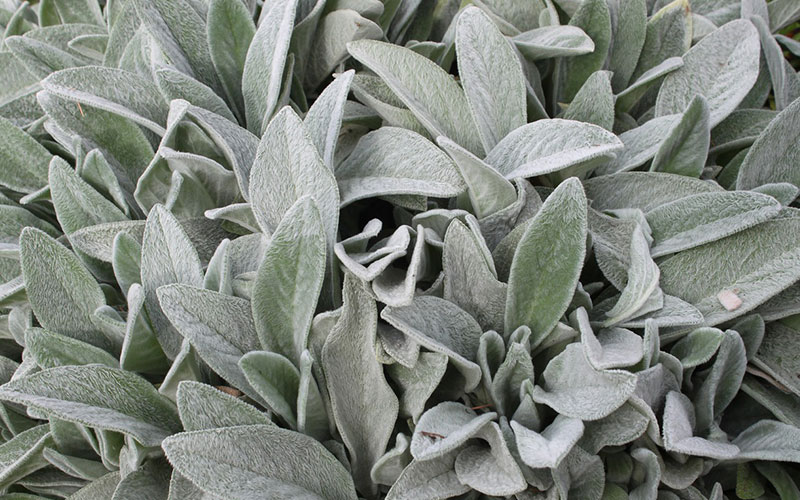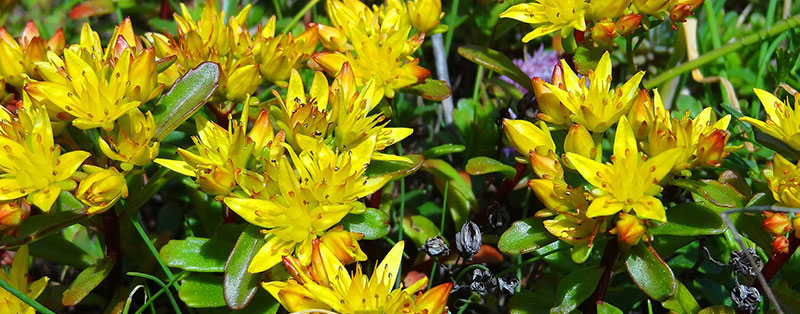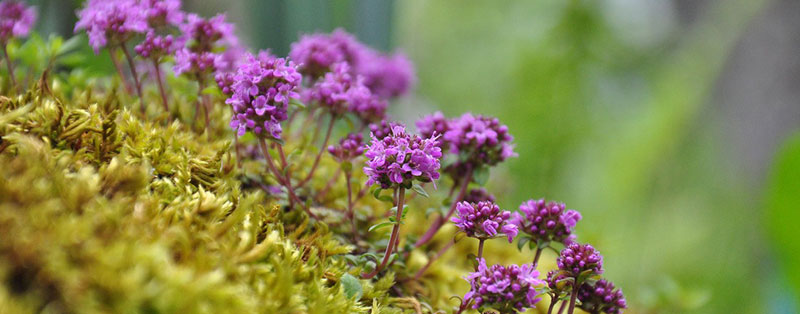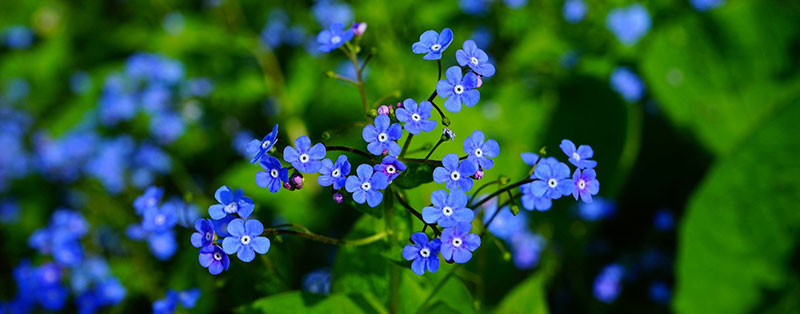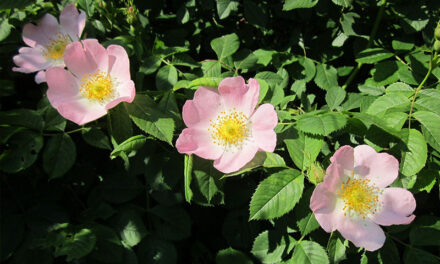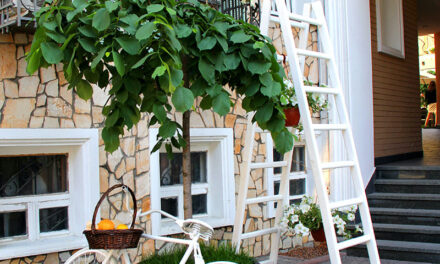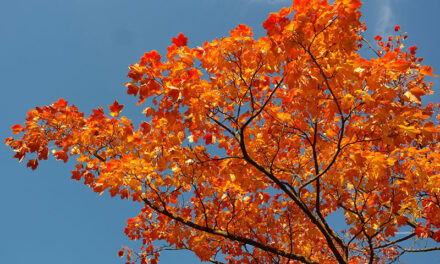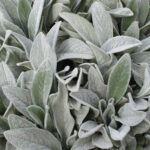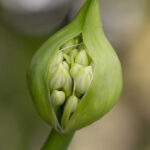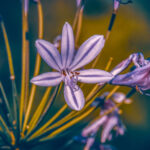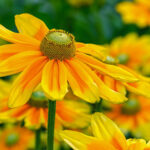Ground covers are indispensable in gardens; they significantly reduce maintenance. As the name suggests, they cover the ground, leaving no room for weeds. Moreover, they are excellent for greening your garden, especially evergreen ground covers. Replace tiles with ground covers in less frequented areas; some are even walkable. Greenery is far more pleasant than paving. In winter, it’s less chilly, providing fauna a place to overwinter. During summer, it cools and reduces soil dehydration.
Evergreen Ground Covers
To avoid a bare garden in winter, opt for evergreen plants. Ground covers also come in evergreen variations. Examples of hardy and evergreen ground covers include Pachysandra, Lonicera, and Stachys. Although the latter is more accurately described as winter-gray, its gray hue creates a beautiful contrast amidst the greenery in the garden.
Pachysandra terminalis ‘Green Carpet’
Known as Japanese spurge or shade-loving plant, Pachysandra prefers shade, retaining its vibrant green leaves. In sunlight, it tends to yellow. Blooming with small white flowers in March-April, reaching about 10-15 cm high, it’s ideal under tree cover or large shrubs.
Lonicera nitida ‘Maigrun’
Also known as shrubby honeysuckle, this hardy ground cover stays low, around 50 cm. It’s suitable for shaping and forming low hedges, a viable substitute for boxwood due to the advancing box moth. Blooming in May with inconspicuous white flowers.
Stachys byzantina
Recognized for its large, greyish, fuzzy leaves, Stachys combines well with other perennials or grasses. Its silvery color creates a charming contrast, even in frosty winters. Blooms in July-August with bright pink flowers, growing about 50 cm tall. Prefers a sunny, well-drained spot, ideal for rock gardens.
Evergreen and Hardy Ground Covers
The difference between evergreen and hardy is their visibility in winter. Both survive the UK winter, but one remains underground while the evergreen variety retains foliage throughout the year.
Opting for hardy covers ensures their return post-winter. Winter hardiness is categorized in zones, from 1 (enduring -45°C) to 11 (+4.4°C). In the UK, zones 6-8 are commonly acknowledged for moderate to good hardiness.
Alchemilla vulgaris or mollis
Alchemilla mollis is favored for its yellow flowers thriving in various soils from May to August. Its raindrop-retaining leaves create a stunning effect. ‘Lady’s mantle’ in English, it spans 30-40 cm in bloom.
Sedum Varieties
Sedum mats are excellent for roofing and garden beds, enduring extreme conditions. Acre, Album, Hispanicum, and Spurium are robust options. They endure heat, rain, and frost, suitable for driveways.
Evergreen and Low-Growing Ground Covers
Sometimes, low ground cover is desirable beneath large shrubs or trees. Even in a smaller garden, low-growing ground covers work well. Suitable options include Ajuga reptans, Aceana Microphylla, Leptinella potentillina, Thymus praecox albiflorus, and Asarum europaeum.
Ajuga reptans
Also known as creeping bugleweed. Ajuga reptans stands at 5 to 10 centimeters tall. It bears violet-blue flowers in May and June. The foliage often remains green through winter. ‘Atropurpurea’ has dark red-brown leaves. It thrives in slightly moist soil and prefers a spot in the sun or partial shade.
Aceana Microphylla
The plant, commonly known as bear’s breeches, prefers a sunny spot. It remains fairly evergreen. Its white flowers in June and July are not very conspicuous, but its prickly fruits are more noticeable. It reaches a height of around 10 centimeters.
Leptinella potentillina
A yellow-brown flowering plant about 5 centimeters tall. With fern-like leaves, it thrives in sunny locations. This variety can be considered among the walkable types. It can replace a lawn or be planted between tiles in a pathway.
Thymus praecox albiflorus
A fragrant plant that attracts bees and butterflies. It stands at approximately 5 centimeters tall and blooms with white flowers in June and July. Suitable for a rock garden, it remains green throughout winter. Place this ground cover in a sunny, moderately dry location.
Asarum Europaeum
Known as European wild ginger. It features shiny kidney-shaped leaves and blooms with inconspicuous reddish-brown flowers in April and May. The leaf height is about 10 centimeters. A robust, winter-hardy, evergreen variety requiring minimal care. It can be planted in partial shade or shadowy areas.
Evergreen Ground Cover for Shade
Some shade-loving varieties have been mentioned, here are some additional specific ground cover species.
Lamium
A dead-nettle is a ground cover that thrives in all ‘difficult’ areas. The species can grow in shaded, dry spots. The spotted dead-nettle, Lamium maculatum, is a bit more selective but also fares well in both dry, normal, and moist shaded soil. Lamium blooms in April, May, June, and July in red-purple or yellow, depending on the type.
Saxifraga
The common name is Rockfoils. This plant blooms with white flowers in April and May. The leaves stay green throughout the year and reach a height of approximately 5 centimeters. As the plant originates from mountains, it’s suitable for rock gardens or between joints or stacked stones.
Brunnera macrophylla
A plant with decorative leaves, making it popular as both a foliage plant and ground cover. Its leaves have a distinct heart shape. The light blue small flowers bloom from April to May and reach a height of about 30 to 40 centimeters. Brunnera Macrophylla ‘Jack Frost’ is a well-known variant with silver-grey leaves. It prefers partial shade.
Geum
Avens is a plant that prefers sun to partial shade. It blooms in various colors, yellow, salmon, orange, red, and white from May to September. Geum doesn’t have many demands for the soil except that it doesn’t like wet ground. Its height ranges from 30 to 75 centimeters.
Evergreen Walkable Ground Covers
If you want more greenery in your garden, you can create a path using stepping stones. This can be done within your lawn, or you can dress the stepping stones with walkable perennial plants, ground covers. Suitable varieties for this purpose are the previously mentioned Leptinella Potentillina and Saxifraga, as well as Sagina subulata and Azorella trifurcata.
Sagina subulata
Known as Irish moss, this plant is originally native. It resembles moss with small white flowers blooming from May to July. Its height ranges from 3 to 4 centimeters. Due to its turf-forming properties, this species is occasionally walkable. Not as sturdy as grass but certainly suitable between stepping stones or along a narrow path occasionally traversed.
Azorella trifurcata
Azorella trifurcata or Andes shrub is a perennial plant with ground-covering characteristics. It blooms with yellow-green flowers in June, July, and August. The plant’s height ranges from 3 to 5 centimeters. This species prefers a sunny spot in the garden.
Evergreen Ground Cover against Weeds
Ground covers come in all shapes and sizes, from taller to very low ones, blooming in various colors. The biggest advantage is that where plants grow, weeds don’t. Weeds don’t get the chance, or at least significantly less, to take root in soil that’s already covered with plants. Besides this advantage, planting also helps prevent the soil from drying out quickly. In winter, beneficial insects and creatures find shelter and food there to survive the winter, attracting more animals like birds to your garden. Nothing but benefits. When you ensure the right type in the right place, you’ll enjoy it for many years.

